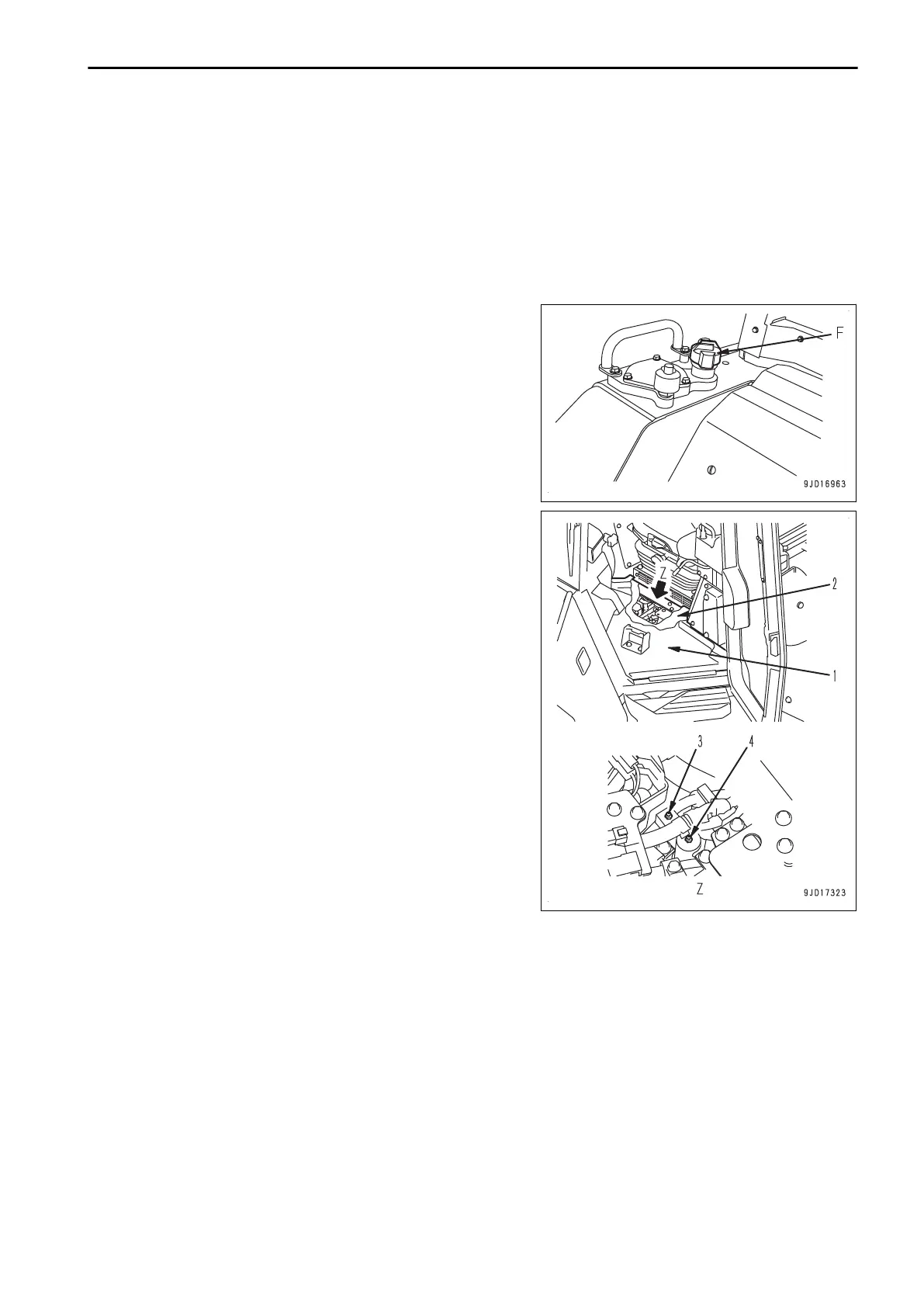METHOD FOR BLEEDING AIR FROM HYDRAULIC CIRCUIT
Bleed air from the circuit after the filter element or strainer
, etc. has been replaced or cleaned.
Since the engine must be started and the blade must be operated, see OPERATION.
1.
Bleed air from the pump according to the following procedure.
NOTICE
If
the pump is operated without filling the pump case with hydraulic oil, abnormal heat will be gener-
ated and this may cause a premature damage to the pump. Be sure to bleed the air.
1)
Remove the cap of oil filler port (F) at the top of the
hydraulic tank.
2)
Remove floor mat (1) and floor plate (2).
3)
Loosen air bleeders (3) and (4) installed to the drain
port and check that oil oozes out from them.
4)
After bleeding air, tighten air bleeders (3) and (4).
Tightening torque: 1
1.8 to 14.7 Nm {1.2 to 1.5 kgm,
8.68 to 10.8 lbft}
5)
Close the cap of oil filler port (F) at the top of the hy-
draulic tank.
2.
Bleed air from the cylinder according to the following pro-
cedure.
NOTICE
If the engine is run at high speed immediately after
startup or a cylinder is pushed up to its stroke end, air
taken inside the cylinder may cause the piston pack-
ing to be damaged.
1)
Start the engine.
2)
Run the engine at low idle.
Run
the engine at low idle for 10 minutes after start-
ing, and then start the following work.
3)
Move each cylinder of the work equipment to approxi-
mately 100 mm {3.9 in} before the stroke end, and re-
peat extension and retraction for 5 minutes.
Take care not to move the cylinder to the stroke end.
4)
Run the engine at high idle (max. speed).
5)
Move each cylinder of the work equipment to approxi-
mately 100 mm {3.9 in} before the stroke end, and re-
peat extension and retraction for 5 minutes.
Take care not to move the cylinder to the stroke end.
6)
Run the engine at low idle and operate each cylinder 4 to 5 times to the end of its stroke to remove the
air completely.
3.
After completing the air bleeding, stop the engine, leave the machine as it is for 5 minutes, and then start
the operation.
The air bubbles in the oil inside the hydraulic tank are discharged.
4.
Check that there is no leakage of oil and wipe off any oil that is spilled.
MAINTENANCE MAINTENANCE PROCEDURE
4-39

